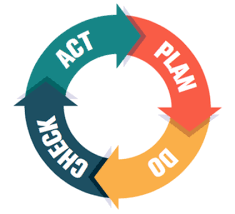
Improving your business
How do you identify ways for improving your business and then successfully implement those changes? Any change will encounter resistance so you need to a framework for managing business improvement projects and an engagement plan to build ownership and adoption. Identifying ways for improving your business Your best starting point for identifying opportunities and priorities for business improvement is your business strategy. What are you trying to achieve? Which markets and customers are you focusing on. What are you offering and why does it offer unique value? Which capabilities and competencies do you need to do this? What type of management systems and culture will you require to support it. Then look at your current business model. How is your business set up and organised to do this? How different is it to the way your competitors operate? Where are the pain points from a customer, staff, supplier and partner perspective? Can you streamline, automate or eliminate processes or touch points? If a new player disrupted our industry, what would they do? Customer journey mapping and business process mapping are useful tools to shed light on ways for improving your business. Just remember your focus must be on how to build capabilities and core competencies that result in sustainable competitive advantage. Once you identify opportunities for business improvement, prioritise them in terms of impact, investment needed, and optimal timing. A framework for managing business improvement projects Most business improvement projects fail because they lack an effective Project Management Framework. Your Project Management Framework should comprises a Project Lifecycle, a Project Control Cycle, and a Supporting Methodology. The Project Lifecycle is the framework (stages and steps) you apply to all business improvement projects. Stages can include Project Initiation, a Project Definition or Scoping, Project Planning and Resource Allocation, Project Tracking and Control, Project Reporting, Project Reviews, and Project Completion and Assessment. The Project Control Cycle describes how you will plan and manage each stage. Based on a simple Plan, Do, Check and Act process, the project control cycle ensures that you have the appropriate plan, controls and corrective actions in place for each stage. The Supporting Methodology are tools and templates you use to execute the project. A Project Charter, Project Meeting Agenda, Project Report, Risk Register and Stakeholder Engagement Plan are common templates used for Process Control Documentation. So develop a Project Management Framework for your business. An engagement plan for improving your business Effective stakeholder engagement is critical for your business improvement projects. You need to get key stakeholders to appreciate the importance and benefits of proposed changes to build ownership. However getting key stakeholders to adopt these changes is your challenge. It’s not enough to communicate proposed changes to your people, customers, suppliers and partners. First, understand the context of the changes you are making. Who will be impacted and how they will be impacted? Think about how these changes will make it easier for people to achieve their goals. Consider the resources or new practices that will be required with these changes. Identify existing norms and rules that will prevent or inhibit adoption of these changes. Once you identify stakeholders directly impacted by the proposed business improvement and stakeholders who can influence the adoption of these changes, invite these people to be part of the solution. In other words, encourage them to be active participants in the design and implementation of the change. Cocreate a value proposition together with each stakeholder that gains their interest, trust and commitment. Different interactional strategies (bonding, bridging and linking) and influencing techniques can be used to do this. Your engagement plan details, maps and monitors interactions to maintain stakeholder interest, manage expectations, and build trust at each stage of the business improvement project. So ensure your Project Management Framework includes an effective Engagement Plan.



